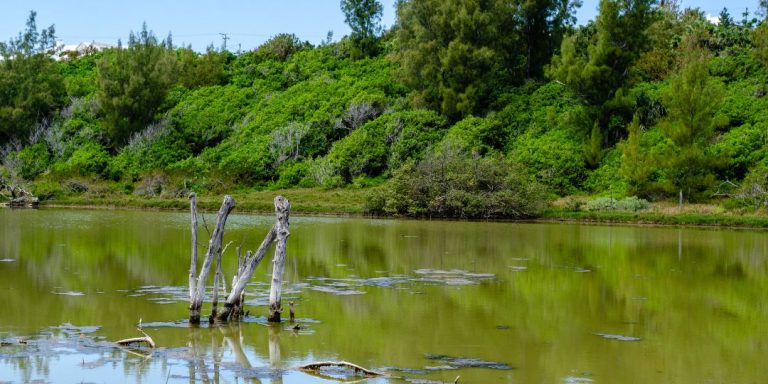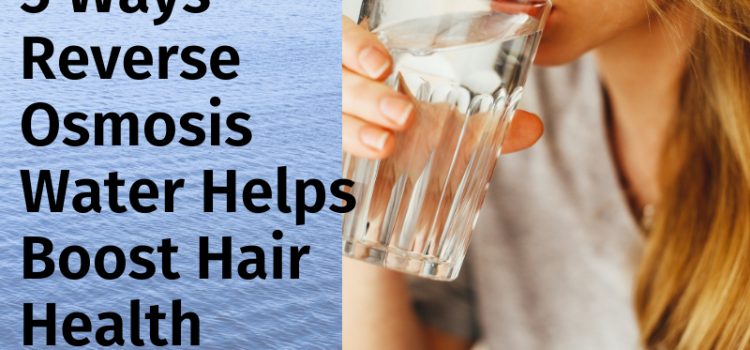Last updated on April 14th, 2025 at 12:20 pm
The water situation in the world is scary. Though seawater and ocean water are abundant, humans lack pure, contamination-free drinking water. The situation is getting worse with time. According to the World Health Organization, 1 in 3 people worldwide don’t have access to clean and safe drinking water. Only 3 percent of the water on the planet is fresh water.
In difficult circumstances, one ray of hope is slightly salty water. What is brackish water, and how do you treat it to make it fit for human consumption? Read on to know.
What is Brackish Water?
In simple words, brackish water is saltier than fresh water and less salty than seawater. It is considerably easier to desalinate than seawater. It usually has a salt concentration of 1,000 – 10,000 parts per million (PPM), which is higher than the salt concentration of 1,000 PPM in freshwater and lower than the salt concentration of 30,000 – 40,000 PPM present in seawater.
The Total Dissolved Solids or TDS level of brackish water is way more than fresh water. The Environmental Protection Agency guideline for drinking water is less than 500 PPM. In brackish water, the TDS level is between 3,000 to 10,000 PPM.
Where is Brackish Water Found?
When you want to visualize brackish water, you can picture a place where a river meets an ocean. These areas are known as estuaries and can be home to different sorts of plants and animals, like mangrove trees and oysters.
Brackish water is found in lakes, estuaries, and even man-made pools and streams. It can also be found in underground aquifers. In the US, there are many places where it is found. A prime example is a place where the Hudson River in New York City meets New York Bay.
There are also man-made sources of brackish water. They include intentionally flooded marshlands that are ideal for prawn farming. Brackish groundwater is also common. It is underground in deep fossil aquifers. The groundwater is usually brackish due to ancient seas or saltwater intrusion in coastal areas. It can also be present if water absorbs an excess of minerals, such as sodium and chloride, as it percolates into the ground.
Is Brackish Water Drinkable?
No, brackish water is not drinkable. It has a salty character. So, if you drink it, your kidneys will overproduce urine to eliminate the extra salt from your body. It might lead to dehydration and other health concerns. Brackish water is only safe to drink when desalinated and properly treated.
What is Brackish Water Used For?
Brackish water can be used in the natural and saline state. It can also be used after it has been desalinized or purified. When it is in its natural form, it can be used as a cooling agent in the oil and gas, thermoelectric power, and mining industries. It can also be used in irrigation by those who need saline agriculture. After desalination, brackish water can be used for drinking purposes by humans and livestock.
Brackish Water Examples
Mangrove swamps like those present in the everglades of Florida are a perfect example of brackish water environments. The salinity in those swamps is closer to that of seawater. These swamps play a key role in filtering contaminants and nutrients from the water. They also stabilize sediments and protect the shoreline from erosion. These swamps are also vital as they provide an active habitat for over 180 birds and 250 animal species.
How Do You Treat Brackish Water?
Brackish water is treated via desalination, which removes dissolved mineral salts from saline water and ensures that it is transformed into fresh and drinkable water. Reverse osmosis technology also plays a key role in preventing water contamination. In this, a RO system will apply pressure to saline water and force it via a semipermeable membrane that blocks the passage of contaminants and dissolved solids. Only pure water is allowed to flow through. Hence, brackish water becomes pure water.
AMPAC Brackish Water Treatment System
The AMPAC USA Brackish Water Reverse Osmosis LX™ Series Turnkey Reverse Osmosis Systems are custom-built according to end-user water conditions and requirements. The LX™ Series offers Fully Automated, Fully Equipped Commercial Brackish Water Purifiers designed specifically for the needs and requirements of commercial pure water users.
These Reverse Osmosis systems can operate with Tap or Brackish Well Water. It includes family homes, restaurants, coffee stores, convenience stores, microbreweries, supermarket produce, food preparation operations, misting, humidification systems, car wash facilities, and many other businesses that must have consistently high-quality water for their daily operations.
These are especially well known for their reliability, serviceability, and consistent performance with minimum user intervention. These key factors are achieved with its solid design. The frames are built with Powder Coated Welded Aluminum. Stainless Steel pressure vessels and fastening hardware provide the structural strength and corrosion resistance required for a commercial appliance.
The AMPAC USA LX™ Series Commercial Reverse Osmosis water purifiers’ design is optimized for the freestanding application. The eight models all occupy similar compact footprints. This allows flexibility in utilizing the limited space available in most commercial utility equipment locations.
AMPAC USA LX™ Reverse Osmosis models incorporate the most reliable combination of proven Reverse Osmosis hydraulic design and state-of-the-art Thin Film Membrane Elements to provide the long-term performance expected by commercial users.
When seeking a brackish water treatment system from AMPAC USA, some of the products you can consider are:
- Industrial Reverse Osmosis 20,000 GPD | 3.18m3/hr.
- Emergency Portable Reverse Osmosis 20,000 GPD | 3.18m3/hr.
- Alkaline Water Reverse Osmosis AP3000-LX-ALK
- Alkaline Water Store Commercial Reverse Osmosis AP3000-LX-ALK by AMPAC USA
- Commercial Turnkey Reverse Osmosis 1,500 GPD | 5.7m3/Day
- Commercial Turnkey Reverse Osmosis 2,200 GPD | 8.3m3/Day
- Commercial Turnkey Reverse Osmosis 3,000 GPD | 11.4m3/Day
- Commercial Reverse Osmosis System 4400 GPD
- Commercial Turnkey Reverse Osmosis 6,000 GPD | 22.7m3/Day
- Commercial Turnkey Reverse Osmosis 8,000 GPD | 30m3/Day
- Mobile Turnkey Reverse Osmosis 10,000 GPD | 37.9m3/Day
- Industrial Reverse Osmosis 12,000 GPD | 1.9m3/hr.
- For more information, visit this link.
What is the Difference Between Saltwater and Brackish Water?
Freshwater has less than 0.05% salt, brackish water has 3%, and saltwater has over 3%. Water is neutral, but the more salt you dissolve into it, the more basic it will become. Hence, saltwater is more basic. Then comes brackish water, and finally comes freshwater. The latter is closest to neutral pH 7.
FAQs
How to Make Brackish Water?
The process of making brackish water is easy. You just need to mix fresh water with brackish water. Many people prefer to make a brackish water aquarium for their fish. This is among the most common man-made process of making brackish water. Brackish water also forms naturally when freshwater meets with seawater in estuaries, coastal streams, and mangroves. No human intervention is needed for those.
Is Rainwater Brackish Water?
No. In simple words, rainwater is hugely different from brackish water. The rainwater compositions in coastal areas or an open ocean are similar to seawater. Terrestrial rain compositions are considerably different from place to place, as the geology of a region can play a key role in the types of particulates that get added to the atmosphere. In essence, rainwater compositions vary geographically; hence, there is no simple formula.
What is Brackish Water Reverse Osmosis?
Reverse osmosis systems are technique that can make brackish water drinkable and fit for human consumption. When seeking brackish water reverse osmosis products, you can rely on AMPAC USA’s Brackish Water Reverse Osmosis LX™ Series Turnkey Reverse Osmosis. The products are custom-built according to end-user water conditions and requirements. The LX™ Series offers fully automated, fully equipped commercial brackish water purifiers designed specifically for the needs and requirements of commercial pure water users.
Conclusion
In essence, it can be said that brackish water is a combination of freshwater and seawater. It is a reliable water source that, if used wisely, can help with the ever-increasing water crisis the world is facing and help people in developing or underdeveloped nations where people don’t have access to safe drinking water and are losing their health and lives due to it.
The technologies that help make brackish water drinkable and fit for human consumption are the need of the hour. When seeking them, trust AMPAC USA and its team. We will help you to find the perfect product for your needs.
AMPAC USA designs and manufactures some of the world’s most reliable Brackish Water Reverse Osmosis products to treat water even in the toughest environments. Our water treatment systems use the best Reverse Osmosis, Seawater Desalination, and water technologies of international standards for industrial, On-shore, and Offshore applications.
We provide the best reverse osmosis systems for residential, commercial, and industrial needs. They help ensure the water is tasteless, colorless, and odorless. We additionally strive for quality of international standards and excellent after-sales service. Our engineers are available to support your water treatment applications anywhere around the world. To know more, call AMPAC USA at 909-548-4900 or visit us here.
References
- https://www.epa.gov/hfstudy/fresh-brackish-or-saline-water-hydraulic-fracs-what-are-options
- https://www.usbr.gov/research/bgndrf/
- https://www.usgs.gov/mission-areas/water-resources/science/national-brackish-groundwater-assessment-how-brackish










